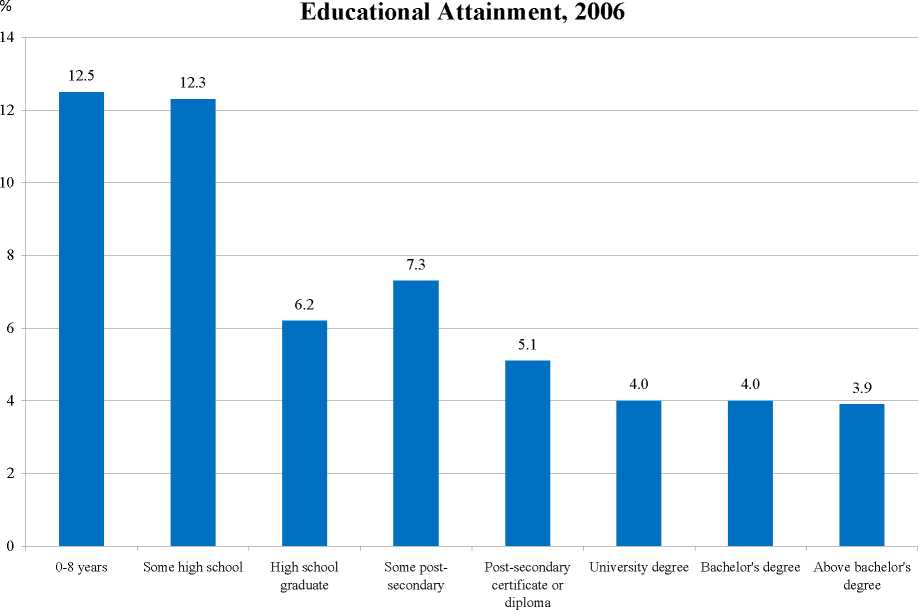22
Census indicate that the greatest gains in terms of employment opportunities from increased
education are for persons with a low initial level of education. High school graduation,
especially, leads to a large decrease in unemployment, as is shown by the clear cut-off between
high school graduates and those without certification. In 2006, the unemployment rate for
Canadians who did not finish high school was 12.3 per cent compared to only 5.3 per cent
average for all those who did graduate (Appendix Table 1).
Chart 1: Unemployment Rate in Canada, by Highest Level of

Source: Labour Force Survey
The idea that the probability of being unemployed decreases as literacy increases is well
supported by the literature (Holzer et al, 2007). As noted by Lynch (2007), in the United States,
individuals with low levels of prose literacy have double the rate of unemployment of those with
high levels. These finding are in line with the data on educational attainment presented here.
ii. Participation Rates
Participation rates are also an important indicator of labour market performance. Those
who are in the labour force are either employed or are looking for a job. Only 24.5 per cent of
persons with no high school experience participated in the labour force in 2006 in Canada,
whereas 51.2 per cent of those with some high school did (Chart 2). High school graduation still
without a high school degree still displayed a much higher unemployment rate than other groups of the same age.
This phenomenon is also reflected in the participation rate and employment rate statistics.
More intriguing information
1. The Impact of Financial Openness on Economic Integration: Evidence from the Europe and the Cis2. I nnovative Surgical Technique in the Management of Vallecular Cyst
3. The name is absent
4. The name is absent
5. Strategic monetary policy in a monetary union with non-atomistic wage setters
6. A Bayesian approach to analyze regional elasticities
7. Effort and Performance in Public-Policy Contests
8. The name is absent
9. The use of formal education in Denmark 1980-1992
10. Who is missing from higher education?